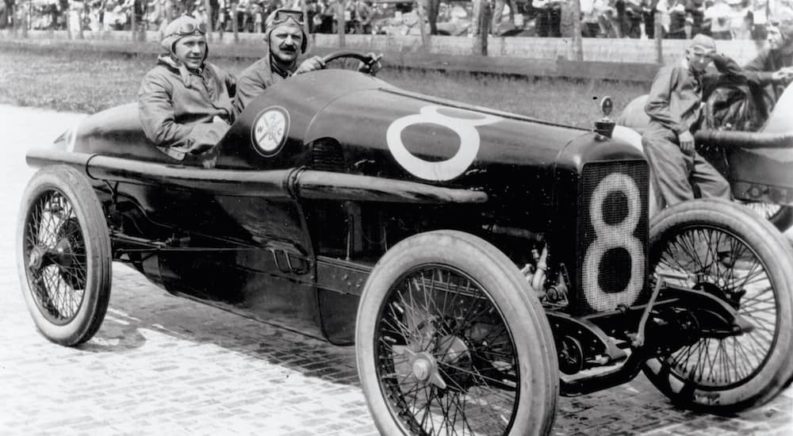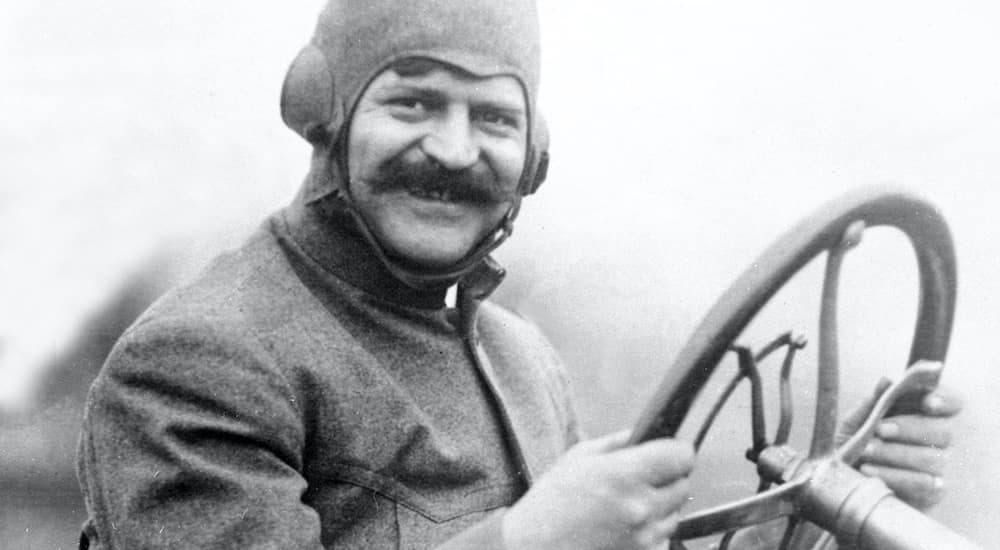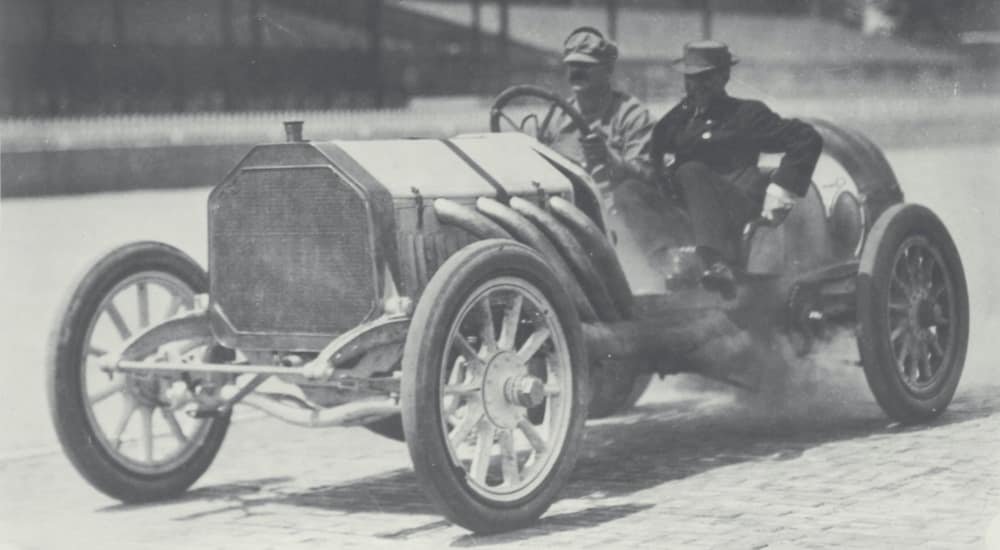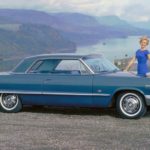It is widely known that William C. Durant, the original founder of GM, also co-founded the Chevrolet Motor Corporation in 1911 as a means to leverage one of the greatest reverse mergers in history. But the business partner who designed the first Chevrolet and gave his name to the brand has been largely forgotten. Who was Louis Chevrolet, and what happened to him when he left his namesake company behind? Chevrolet lived an interesting and rather adventurous life, and founding a legendary car company was only one of his many business ventures. The next time you visit a Chevy dealership, stop and think about the unsung co-founder who helped build the brand.
Louis Chevrolet’s Early Life
Louis was born in Switzerland on Christmas Day in 1878, the second child of seven. His father, Joseph, was a clock and watchmaker who trained Louis in the precision of building mechanical parts while he worked in his father’s shop. When Louis was six, the Chevrolet family moved to France, where the young boy was employed in a wine cellar. During his employment, he designed a pump that made the decanting process from one cask to another much quicker, an invention that earned him a little taste of fame in Burgundy, France.
At some point in his youth, Louis got involved in bicycle racing, a sport that led to him taking a job in a bicycle repair shop in his teens. His love of mechanical work led him to start building his own bicycles, which he sold under the name “Frontenac,” after a French seventeenth-century governor of American colonies. According to legend, it was around this same time that Louis saw his first automobile, owned by the famous American industrialist Vanderbilt, and was asked to repair the vehicle. In this singular experience, all of Chevrolet’s interests came together and formed a dream to go to America and build cars.
The American Dream Comes to Life
Once his fascination with automobiles took Louis to Paris to begin a new career as a mechanic, he worked for about two years before an opportunity arose to go to Canada in 1900. Seizing his chance to cross the ocean to the continent of his dreams, Louis Chevrolet took a ship to Canada and began work as a chauffeur in Montreal until he saved enough money to move to New York City. For the next few years, Louis worked at a couple of different car companies as a mechanic, got married, and then a break in his career determined a new path for Chevrolet as a racing driver for the Italian car company, Fiat.
Shortly after this shift in Chevrolet’s career, his father died. Louis brought his family from France to live in America, a decision that later allowed him to involve his brothers in his career path. It didn’t take long before Louis was making a name for himself as a race car driver, winning the “Three Miles” race and setting a world record for traveling a mile in just 52.8 seconds. Several other records were set by Chevrolet in following years before he began designing and building race cars of his own.
Louis brought his brothers, Gaston and Arthur, into the racing world with him, and the three brothers became well known for their skills as drivers. It was not unusual for all three brothers to be entered in the same race, though Louis often won. Eventually, Louis began driving vehicles he designed, again using the Frontenac name. One of these vehicles was the race car he entered into the Indianapolis 500 in 1916. His brother, Gaston, also entered with a Frontenac, though neither brother finished the race that year. In the midst of a set of races in Pennsylvania, another driver was having trouble with his Buick, and Louis agreed to work on the car to get it running. When the Buick won the race the next day, the owner of the Buick team recruited Louis as a new driver.
Joining the GM Family
After Louis joined the Buick racing team, he and his brothers moved to Flint, Michigan, where Arthur Chevrolet served as chauffeur to William C. Durant. The Chevrolet brothers handily won more than half the races they drove, and Durant rewarded them all with $10,000 bonuses – a large sum of money at that time. When the Chevrolet brothers earned an Indianapolis 500 trophy for Buick in 1909, Durant was able to capitalize on Louis as a celebrity to help him start a new automotive company. Though Chevrolet’s involvement in the company is often reported as a partnership, the relationship was complex. Durant, ever the schemer, was juggling companies with other people and forging other partnerships, always with the intent to win back GM after having been given the boot as its former president.
Between 1909 and 1911, Louis Chevrolet got to work designing and building prototypes for Durant in an effort to get a car company started. By November of 1911, Durant incorporated the Chevrolet Motor Company of Michigan, with several other partners included in the deal. In the creation of the company, Durant made it clear he wanted to compete against Ford’s Model T, which meant he wanted to build a vehicle anyone could afford to buy. Chevrolet was more interested in building quality vehicles that held to the vein of his racing cars built for speed. Unfortunately, the two could not agree on the direction of the company, and ultimately it would be Louis who would leave the business behind. Durant held control of the company, and Louis moved on, leaving behind his name as a legacy. However, Durant didn’t last much longer and was soon forced out of his newly-reclaimed position as head of GM.
Chevrolet Continues His Legacy
After leaving the company bearing his name, Chevrolet went back to building cars under the Frontenac name, founding the Frontenac Motor Company in 1916, which supplied Ford Model T racing parts. He also went on to become VP and chief engineer of American Motor Company in New Jersey. Cars eventually wouldn’t be enough for Louis; in 1926, he began designing aircraft engines and founded a company with his younger brother, Arthur. They had a disagreement and parted ways, and then Louis founded yet another aircraft engine company in Indianapolis. In 1932 he applied for a patent for a 10-cylinder radial engine, but his money and his luck had finally run out. Louis could no longer fund his company and had to return to work as a mechanic. Ironically, he went to work for none other than the Chevrolet plant he left in Detroit.
By the year 1934, Louis Chevrolet suffered a stroke. This blow to his health may well have prevented his ability to rebuild his company when the patent for his engine was finally granted in 1935. He lived out the remainder of his days in Michigan and died of a heart attack in 1941 in Lakewood, just outside of Detroit. Because of Chevrolet’s many contributions to the automotive and racing world, he has been awarded many posthumous honors, and his bust stands at the entrance of the Indianapolis Motor Speedway Museum. His name, of course, still lives on with the Chevrolet brand, which continues to produce vehicles as a division of GM. We can only wonder what Louis would think if he could get behind the wheel of Chevy’s latest performance masterpieces like the C8 Corvette or Camaro ZL1.






